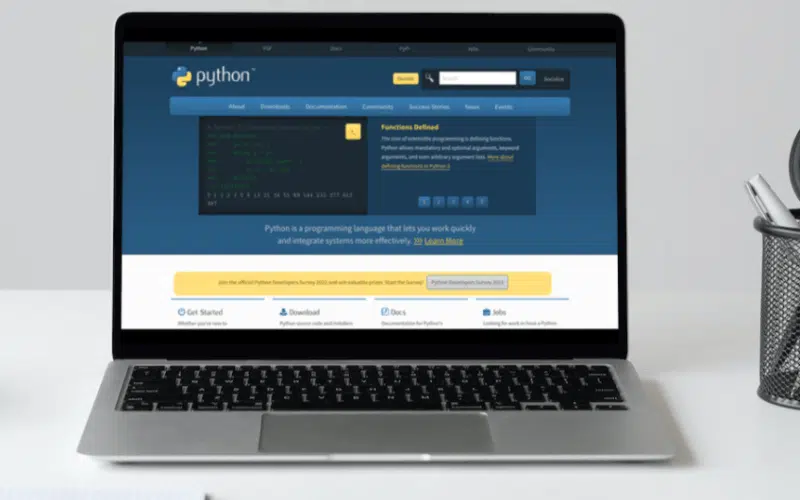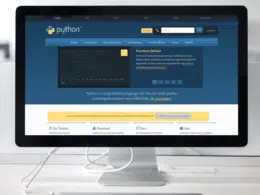Are you looking for Python solution to convert a dictionary to a DataFrame in Python?
Converting a dictionary to a Pandas DataFrame is a useful way to transform and analyze data in Python. By using the DataFrame constructor and the update method, you can easily convert a dictionary to a DataFrame.
In Pandas Python, a DataFrame is a two-dimensional tabular data structure with labeled axes (Columns and rows), much like a spreadsheet. The essential three components of a DataFrame are rows and columns. Furthermore, DataFrames are one of the most common data structures used for data analysis due to their flexible and intuitive nature.
We can convert any other collection in Python, like a list, dictionary, array, etc., into a DataFrame. This article focuses on converting a dictionary into a DataFrame, so let’s begin.
As we all know, computer programming has multiple ways of doing the same task. Similarly, in this case, we use different methods to convert a dictionary into a DataFrame.
The following are two of those solutions:
- Use dict.items() to convert a dictionary into a DataFrame
- Use from_dict() to convert a dictionary into a DataFrame
But before going into further details of DataFrames, first, let’s learn about using dictionaries in Python.
Table of Contents
How to Create a Dictionary in Python?
Dictionary is a data structure that belongs to the collections class in Python, and it stores the data in key-value pairs. Each key has a corresponding value; you must use the specific key to access the deals.
Let’s create a dictionary in Python:
Code
# create a dictionary
student = {
"Name": "Tom",
"Age" : 26,
"Program": "Software Engineering",
"CGPA": 3.7
}
print( student )
Output
{'Name': 'Tom', 'Age': 26, 'Program': 'Software Engineering', 'CGPA': 3.7}
Wow! This was super easy. 😃
Now that we have understood how to create a dictionary in Python, we can talk about converting the dictionary to a DataFrame in Python.
How to Convert a Dictionary to DataFrame in Python?
We can convert any collection, like an array, list, or dictionary, into a DataFrame using Python’s valuable and built-in functions. There could be other different ways of converting a dictionary into a DataFrame, but in this article, we’ll focus on the two built-in functions dict.items() and from_dict().
Method 1: Use the from_dict() Function
We can use the from_dict() function to convert a dictionary into a DataFrame in Python; let’s see a practical example.
Code
import pandas as pd
# create a dictionary
student = {
"Name": "Tom",
"Age" : 26,
"Program": "Software Engineering",
"CGPA": 3.7
}
# convert the dictionary' student' into a DataFrame 'df'
df = pd.DataFrame.from_dict(student, orient ='index')
print(df)
Output
Name Tom Age 26 Program Software Engineering CGPA 3.7
This statement df = pd.DataFrame.from_dict(student, orient =’index’) is responsible for converting a dictionary into a DataFrame.
Method 2: Use the dict.items() Function
In Python, the dict.items()) is also used to convert a dictionary into a DataFrame in Python. It is a built-in method and works similarly to from_dict():
Code
import pandas as pd
# create a dictionary
student = {
"Name": "Tom",
"Age" : 26,
"Program": "Software Engineering",
"CGPA": 3.7
}
# convert the dictionary' student' into a DataFrame 'df'
df = pd.DataFrame(list(student.items()))
print(df)
Output
0 1 0 Name Tom 1 Age 26 2 Program Software Engineering 3 CGPA 3.7
The above 👆 are two examples; both work similarly and help us convert a dictionary into a DataFrame. Other than that, you can define series and combine them as a dictionary using the different built-in functions like join(), merge(), concat(), and append(). But that would be a little manual and lengthy process though it is still helpful in some scenarios.
What’s Next? Functions to Use With a Pandas DataFrame
That being said, once your dictionary is converted to a DataFrame, you can use the many methods and functions in Pandas to analyze and manipulate your data.
For example, you can use the head and tail methods to view the first and last few rows of the DataFrame, or you can use the describe method to generate summary statistics for each column of data.
You can also use the plot method to create visualizations of your data. For instance, you can use the plot method to create a line chart, a bar chart, or a scatter plot. This can help you to understand trends and patterns in your data quickly.
Additionally, you can use the groupby method to group your data by one or more columns and then apply aggregate functions to each group. This can be useful for generating statistics for subsets of your data.
In summary, the Pandas library provides a powerful set of tools for working with data in Python.
Conclusion
In conclusion, converting a dictionary to a DataFrame in Python is a simple and efficient way to transform and analyze data. Using the DataFrame constructor or the update method, you can easily convert a dictionary to a DataFrame and start working with your data in Python.
To summarize this article on converting a dictionary into a pandas DataFrame with Python, we discussed how to create a dictionary and the different methods used to convert a dictionary into a DataFrame.
Let’s have a quick recap of the topics discussed in this article
- How to create a dictionary in Python?
- How to convert a dictionary into a DataFrame in Python?
- Use the from_dict() function to convert a dictionary into a DataFrame.
- Use the dict.items() function to convert a dictionary into a DataFrame.
Time to explore more! Name any other function that converts a dictionary into a DataFrame.












